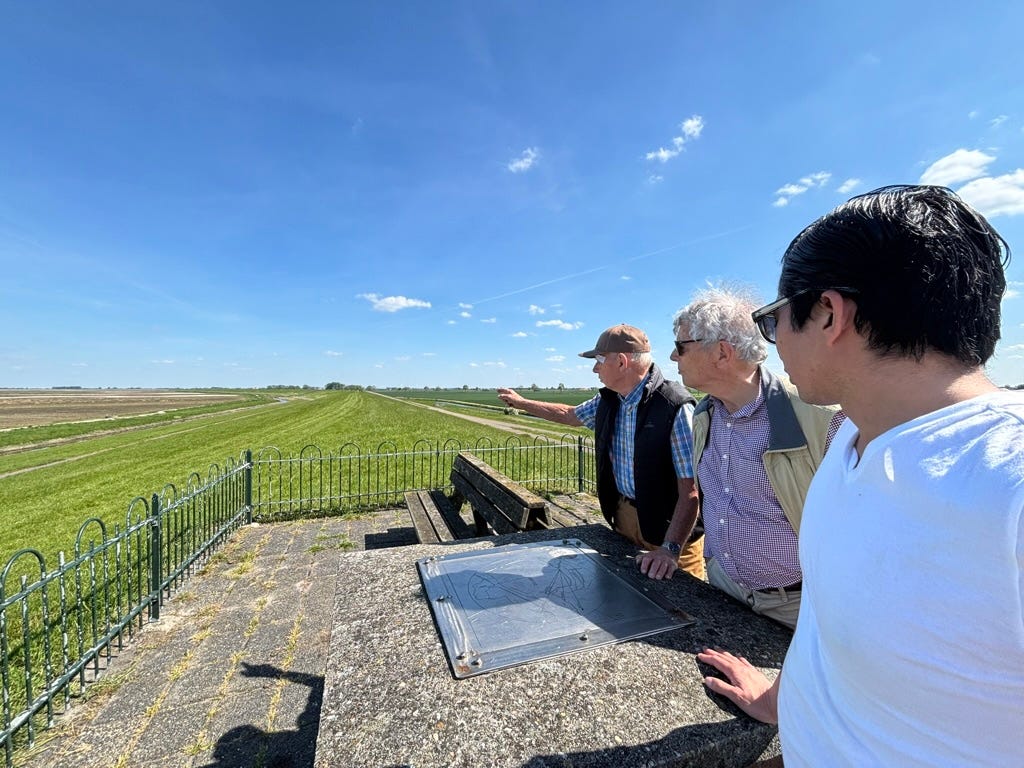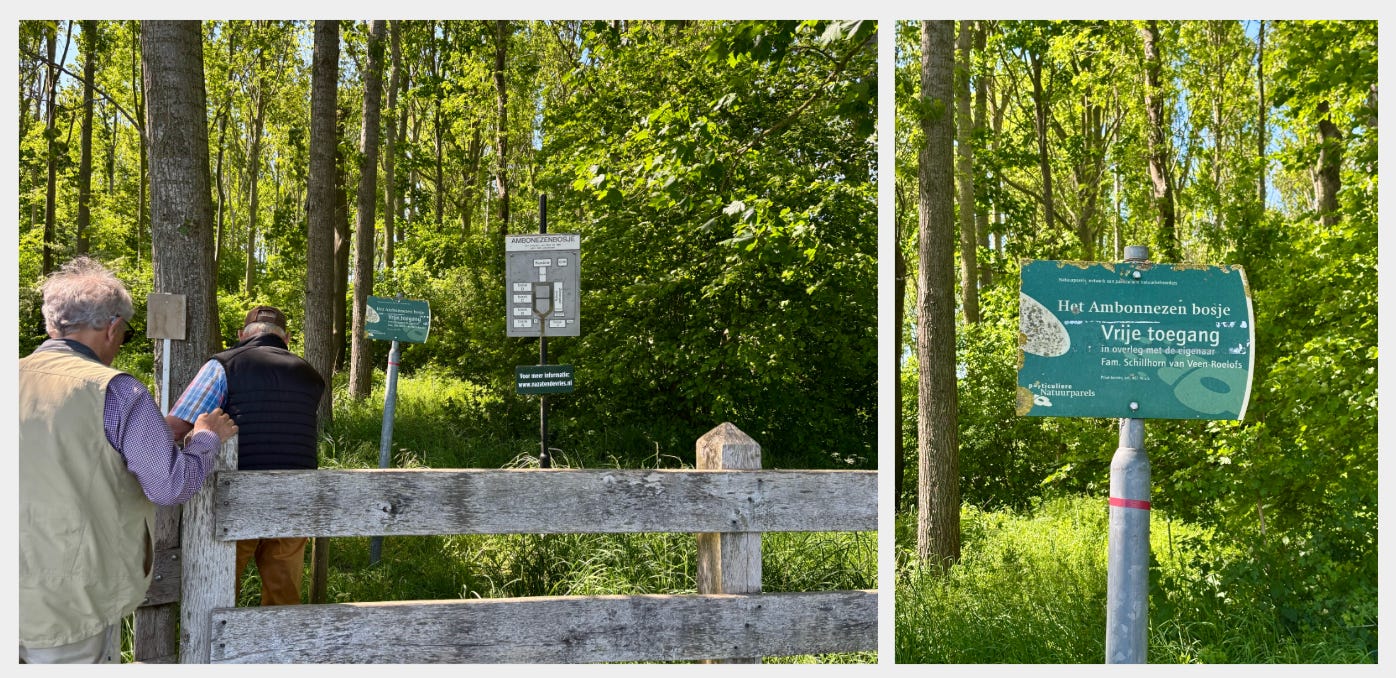Anita Schillhorn van Veen | July 15, 2025
The Ambonese Woodlot Edition
On history, memory, WWII, and colonialism.
Anita Schillhorn van Veen (ASVV) is a friend of WITI, executive director of strategy at ad agency McKinney in Los Angeles. She writes her own newsletter on marketing and culture, which you can read here.
Anita here. There’s a plot of land in the northern part of the Netherlands with my family’s name on it. It borders the Wadden Sea, a sea of tidal flats stretching from the Netherlands to Denmark (and now a World Heritage site). Over centuries, this area has inspired one of the Netherlands’ most lauded feats of engineering: a series of dikes that push back the sea to create miles and miles of new land.
This reclaimed land is called a polder, and most of it is used to grow wheat, canola, sugar beets and dairy. It is remarkably flat as far as the eye can see, and marked by stately 18th and 19th century farmhouses built from brick and thatch.
On this particular corner of my uncle’s land, no more than 10 acres, there are a couple of markers of modern history. I remember these stories from my childhood, and on a recent visit, I got to relive them a little.
First, there is a small one-story house, seemingly made with the red brick, white windows, and tiled roof typically used for Dutch middle-class homes. But if you peer inside, the walls are almost 3 feet thick, and a concrete beam supports the structure. And one window isn’t a window at all, but painted to look like a window, with curtains, flowers and all.
This house was built in World War II by the German occupying army as a munitions storage for anti-aircraft guns to attack allied forces. It was disguised as a house in this remote corner of farmland, and you can now rent it as a vacation home, and look out for miles over wheat and sugar beet fields.
Next to the house is a small forest, a rare uncultivated patch in the endless rows of crops and waterways. Although there are no buildings now, it is haunted with 20th century history. Initially, there were barracks for the workers that built the dikes. During the German occupation it housed German soldiers and their munitions. After World War II, it had a stint as a post-war prison camp, for the Dutch who collaborated with Germans during the war. And then, the history for which it’s now named -- a camp for Ambonese refugees.
Ambon is even more remote than this part of the Netherlands. It’s one of a patchwork of small islands in the Eastern part of Indonesia known as the Moluccan islands, once a crown jewel in the Dutch colonial system for its spice production. Famously, the Dutch traded Manhattan to the English for this corner of the world, and it became a bastion of Dutch trading power for centuries.
The Dutch eventually promised these islands independence, so they fought with the Netherlands against an Indonesian army that sought freedom from colonial rule in the late 1940s. The Netherlands lost that war, ceding its Indonesian colonies to a new independent government. The new Indonesian government, however, were suspicious of the Moluccan soldiers who had fought with the Dutch. As a compromise, the Dutch agreed to temporarily house them in the Netherlands. Many Moluccans came to the Netherlands, still hanging on to the promise of an independent Moluccan nation. This little woodlot housed 300 refugees, mainly from the island of Ambon, who hung onto their hopes for independence for decades. They rebuilt their customs and foodways in this remote northern encampment in the Netherlands, and refused permanent housing because it meant giving up their dreams of going home.
Their independent homeland never came to fruition. Many left, or were forced to leave the camps for towns and neighborhoods to be assimilated into Dutch society, and the barracks faded into the forest. This land could have turned into farmland, just like the neighboring canola fields with their sparkling yellow flowers. But instead, my family chose to preserve it, uncultivated, with a plaque commemorating Het Ambonezen Bosje, the Ambonese Woodlot. And the commemoration is meaningful; when we visited there, a man of Moluccan origin was showing his granddaughters where he had grown up, and telling the story of their heritage.
Why is this interesting?
History crisscrosses every open field and built landscape. It can be easy to forget in the US, where landscapes are dominated by strip malls, skyscrapers, and suburbs. Memory is longer in places where less changes. The same piece of land has generations of memory written on it, and even this plot of farmland carries the scars of world wars and global immigration, the hangover of a colonial past.
I now live in Los Angeles, where memories are short. Where I live, on Tongva native land, there have been Mexican cattle ranches, oil wells, housing for pier fair workers, canals and street cars, but few people remember or commemorate any of it. In Los Angeles, history fades fast, but encountering the long history of an open forest and a little house reminds me to look below the surface for the stories underneath.
In memory of my aunt Titsia Schillhorn van Veen-Roelofs.


